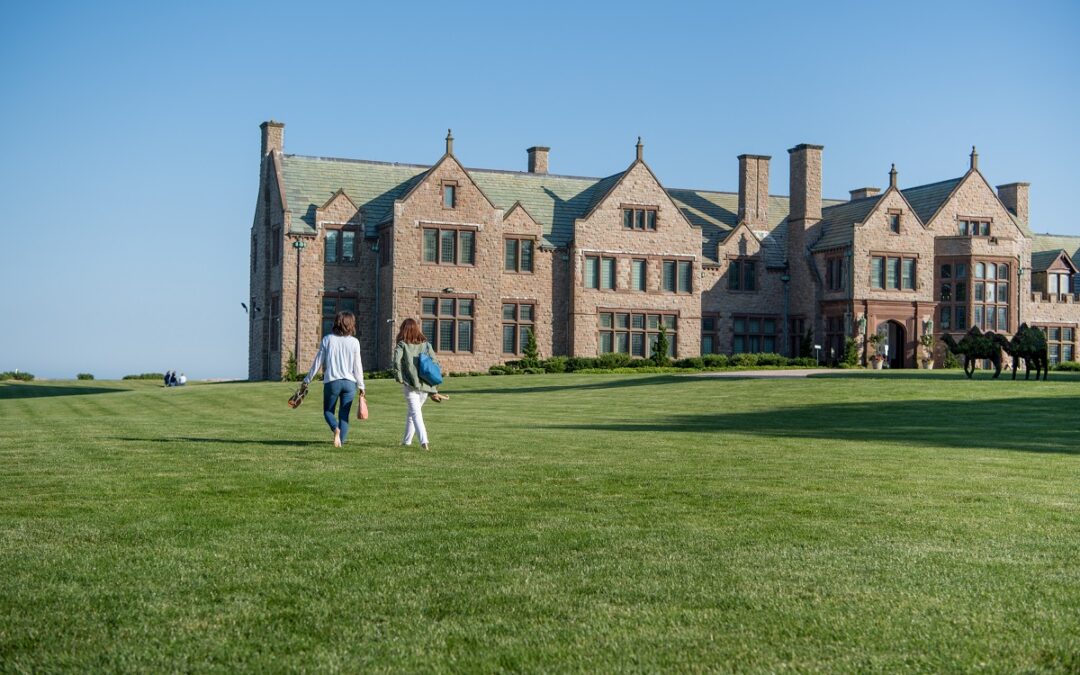
by CC:S MY | Jul 24, 2018 | NRF News
The month of August is jam-packed with fun activities that continue to celebrate the 50th anniversary of the Newport Restoration Foundation. We’ll be looking back at — and sometimes reviving — what Doris Duke and others were up to around the time of its founding and much more! Please mark your calendars for special events including:
A Perfect Storm: The Collision of Hurricanes, Climate Change and Coastal Population Growth
Newport Historical Society Resource Center
August 1 / 5:00 – 7:00 pm
$10 – $5 NHS members & NRF tenants
Jeff Donnelly, a climatologist at Woods Hole Oceanographic Institution, will discuss the historical links between hurricanes, climate change, and the population growth along the coast. Please register for this event by calling 401-846-0813 x110 or email hrockwood@newporthistory.org.
Gene Smith’s Sink and the Mid-Century Underground Jazz Scene
Rough Point
August 2 / 5:30 – 7:00 pm
$15 in advance, $20 at the door
This talk follows the footsteps of legendary mid-century photographer Eugene Smith and his New York City “jazz loft,” which became an afterhours haunt for the likes of Thelonious Monk, Zoot Sims, and yes… even Doris Duke.
Gardening with the Masters: The Three Sisters Technique
Prescott Farm
August 5 / 10:00 am – 12:00 pm, Lecture begins at 11:00 am
Free Event
Join the Master Gardeners for another special presentation this month at Prescott Farm. On Sunday, August 5 at 11 am, Betsy McClintock will speak about the “The Three Sisters Growing Technique”. In this lecture, learn the history, legend and practical use of Three Sisters Gardening and see a growing example at Prescott Farm. The Guard House and 1812 Windmill will also be open and staffed for public enjoyment.
Whitehorne House Museum Open House
August 9 / 5:00 – 7:00 pm
Free Event
A fixture of Lower Thames Street for almost 45 years, it’s time for some change at Whitehorne House Museum! Explore the collection of 18th-century Newport furniture for the first time or come back to hear about plans for the revitalization. The museum’s charming pocket garden will also be open for wandering.
Camelot vs. the Counterculture: Fashion and Society in the 1960s
Rough Point
August 23 / 5:30 – 7:00 pm
$15 in advance, $20 at the door
Jackie Kennedy in the White House and Grace Slick at Woodstock. This illustrated talk explores the tangled web of fashion, culture, and society in the 1960s. This event is sponsored by the Costume Society of America, Northeast Chapter.
Ask a Gardener
Rough Point
August 25 / 11:00 am, weather permitting
Included with admission to the house or grounds
Every last Saturday of the month, estate gardeners share their expertise on a range of topics from plant identification to organic garden care. Get insider tips on how to make your own garden as lush as the gardens at Rough Point.
For more information on all events, visit www.NewportRestoration.org/events.
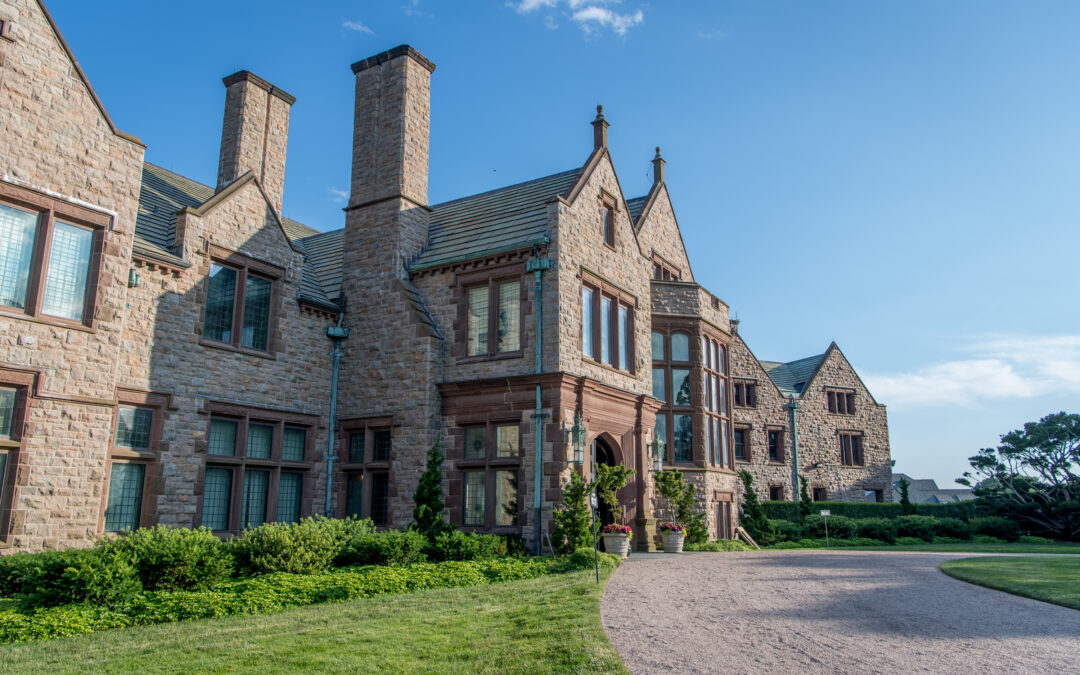
by CC:S MY | May 24, 2018 | NRF News
This spring and summer, NRF will offer public programming that celebrates the 50th anniversary of the Newport Restoration Foundation by looking back at — and sometimes reviving — what Doris Duke and others were up to around the time of its founding. Please mark your calendars for special events including:
Ask a Gardener
Rough Point
May 26 / 10:30 am, weather permitting
Price: Included with admission to the house or grounds
Every last Saturday of the month, estate gardeners share their expertise on a range of topics from plant identification to organic garden care. Get insider tips on how to make your own garden as lush as the gardens at Rough Point.
Gardening with the Masters
Prescott Farm
First Sunday of the month
June 3 & July 1 at 10:00 am -12:00 pm / Free
Whether you’re growing lettuce or lupines, the URI Master Gardeners are here to help! Bring in a soil sample from your home garden for free analysis. At 11:00 am, hear garden pros speak on selected topics. The 1812 Sherman Windmill will also be open for touring.
Whitehorne House Museum Open House
June 14 & July 12 / 5:00-7:00 pm / Free
A fixture of Lower Thames Street for almost 45 years, it’s time for some change at Whitehorne House Museum! Explore the collection of 18th-century Newport furniture for the first time or come back to hear about plans for the revitalization. The museum’s charming pocket garden will also be open for wandering.
Premier Of “I Dare You: A Musical Suite Dedicated To Doris Duke”
Rough Point
June 15 / 7:30-9:00 pm
$25 in advance; $30 at the door
Doris Duke’s lifelong passion for jazz is reignited at Rough Point this summer. Composer and musician Francisco Pais has assembled musicians from around the world to debut an original contemporary jazz suite inspired by Doris. Listen to the imagined soundtrack of her life at this one-of-a-kind performance.
Party Like It’s 1968 Garden Party
Rough Point
July 11 / 5:00-7:00 pm
$25 in advance; $30 at the door
Back by popular demand! Come celebrate this big year for NRF in 1960s style. Join us as we get groovy with vintage cocktails, ocean breezes, genteel lawn games, and live music.
Closet Tour: Doris Duke’s 1960s Wardrobe
Rough Point
July 17 / 5:30-7:00 pm
$15 in advance; $20 at the door
Get a rare glimpse inside Doris Duke’s closet and the Rough Point costume collection. This curator-led experience will focus on Doris’s sartorial choices during the 1960s, including go-go boots and colorful caftans, and what we can learn from the garments she left behind.
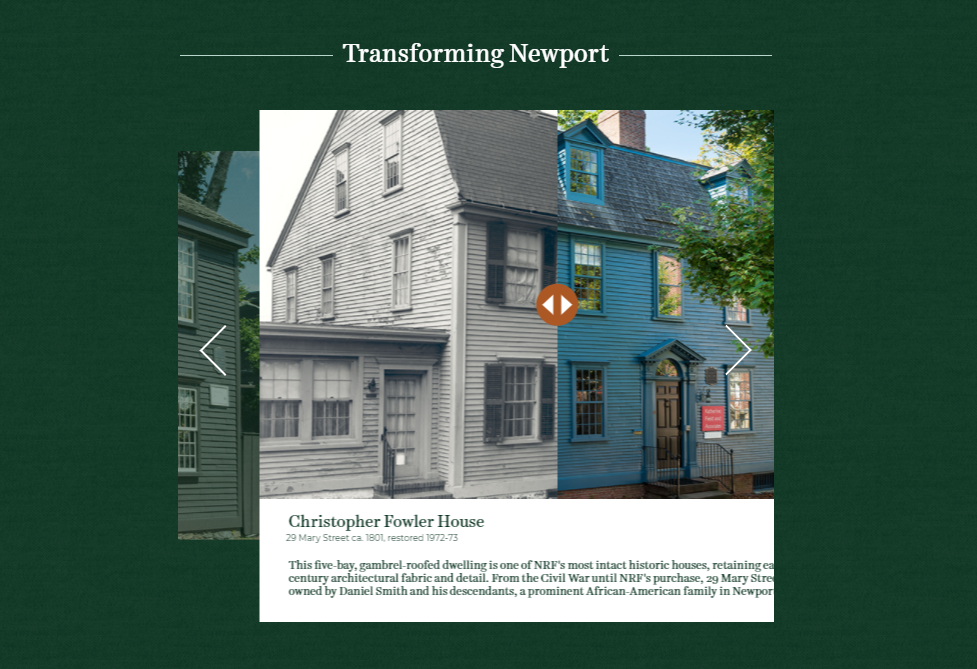
by CC:S MY | May 22, 2018 | NRF News
Newport Restoration Foundation is proud to announce the launch of our brand new website! Our new user-friendly, mobile responsive site, has been designed to encourage exploration as well as provide educational resources to the community and beyond. Interactive features have been developed to give online visitors more opportunities to learn about NRF and what we do. For instance, you don’t want to miss:
You may also notice our logo is looking a little different these days. Along with our new website, NRF is launching a new brand identity with a refreshed logo design and updated color palette that unifies all areas of the organization. NRF actively participates in the field of historic preservation through our tenant stewardship program and Keeping History Above Water initiative, as well as operates three museums in the Newport area. Our new branding will tie all of these entities together to clearly express our mission.
Who knew 50 years could look this good? This brand launch coincides with the 50th anniversary year of the Newport Restoration Foundation, and is one of the many projects we are doing to celebrate this incredible milestone. NRF has evolved greatly from its beginnings in 1968, when it was founded by heiress and philanthropist, Doris Duke. From starting as a historic preservation organization focused in Newport, RI, to Doris Duke’s establishment of Whitehorne House and Prescott Farm as museums, and later, the acquisition of Rough Point Museum after her passing, NRF’s identity has changed as these different events occurred. In its 50th year, NRF is defining that identity, and preparing for what another 50 years may look like as an organization.
Newport Restoration Foundation would like to especially thank our website and design partners from Design Agency in Pawtucket, RI and Jake & Co in Providence, RI for their vision and dedication to this project. We hope you’ll enjoy using our new site and please stay tuned for more from NRF as we continue to roll out our refreshed look this year!
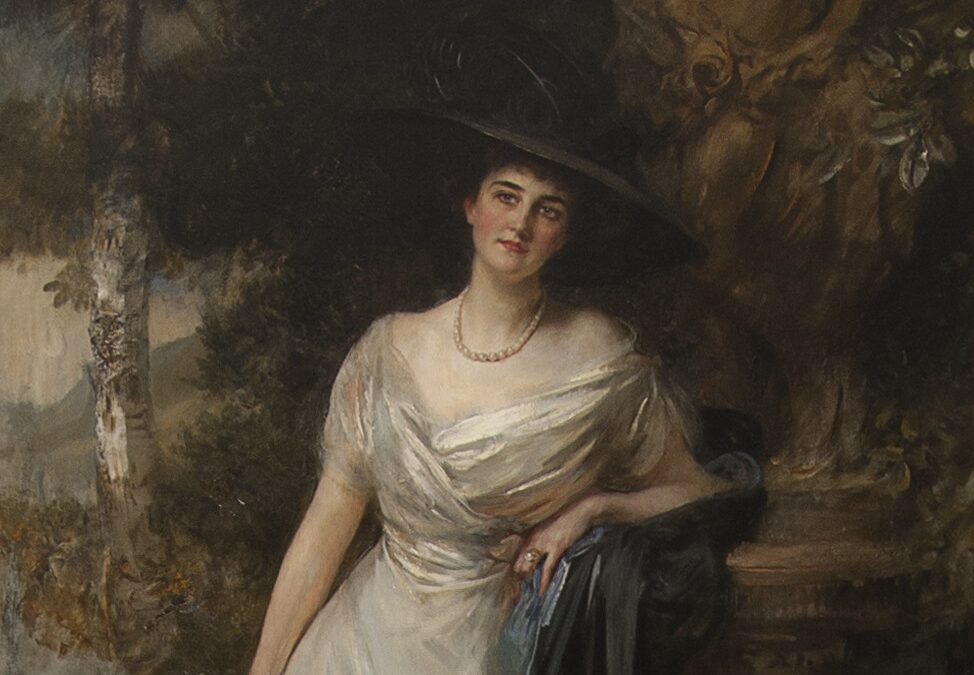
by CC:S MY | May 13, 2018 | NRF News
Walking through Rough Point on Mother’s Day, I’m particularly aware of the mothers looking on from their gilded-framed perches. Nanaline Holt Inman Duke’s presence via portrait is mere inches away as we walk upstairs to what was her bedroom, now arranged as her daughter, Doris Duke, decorated it and used it a few decades ago. Nanaline Duke was born and raised in Macon, Georgia; a self-possessed beauty, more “steel magnolia” than “Georgia peach.” It was her desire to join the elite families from the south and New York City who summered in Newport that had the family first renting “summer cottages,” and later buying Frederick Vanderbilt’s Rough Point in 1922. Doris, Nanaline’s only daughter, inherited Rough Point upon the death of her father, James Buchanan Duke, in 1925.
Doris’s 1923 portrait by John DaCosta is displayed next to her mother’s, at the top of the stairs. Both mother and daughter are, to borrow from the Sound of Music, “girls in white dresses with blue satin sashes.” Nanaline and Doris’ possessions are interspersed throughout the house: co-existing in the bedroom and adjoining bathroom and highlighting gifts passed from one generation to the next. Hanging in the bathroom are Nanaline’s Chinese watercolors of birds. These predate daughter Doris’ 1958/9 auction purchases of 18th-century hand-painted Chinese wallpapers depicting blossoming peony trees, exotic birds, and butterflies, now on display in the Music Room. On the crystal vanity sits an 18-karat gold Tiffany & Co. dresser set. This fifteen-piece ensemble, likely a gift to her mother, was passed on to Doris. Above Doris’s bed is an embroidered chinoiserie scene on a silk satin panel that once belonged to her mother. Characteristic of Doris’s taste and design sensibilities, practical white cotton eyelet dust ruffle and canopy from J.C. Penney-with price tags in place (!) complement the fancier room accents.
The connection between mother and daughter’s taste in collecting continues throughout the house. The Dining Room features a pair of Brussels Gothic tapestries from the early 16th century on display at either end of the dining table. Nanaline purchased these from Duveen Brothers (their 720 Fifth Avenue gallery was just twenty blocks south of the Duke’s mansion at 1 East 78th Street in Manhattan) in 1923 before leaving on a mother-daughter European sojourn the next day. In 1953 they were donated to Duke University and hung in the reference room of the west campus library. Doris asked for the tapestries back in 1957 and they came to Rough Point that July.
By Kathleen Weathers, Rough Point Tour Guide
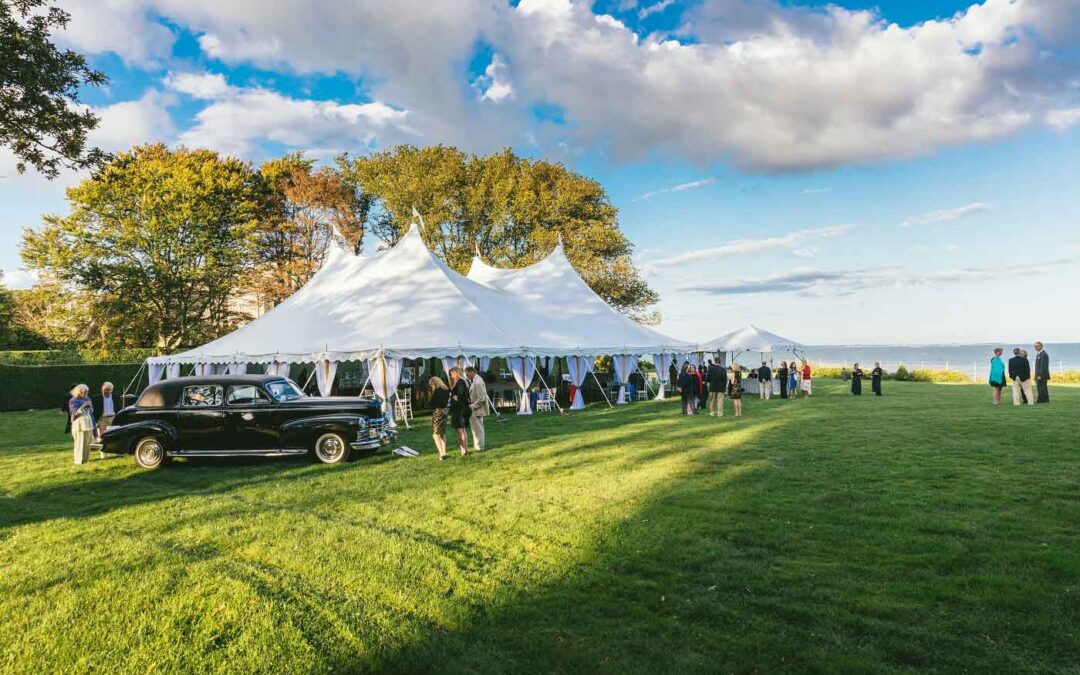
by NRF User | May 7, 2018 | NRF News
The Development Coordinator is responsible for establishing, developing and maintaining a fundraising program to support and enhance the mission of the Foundation to include the following areas: the major gifts program, grants, annual fund, planned giving, corporate and foundation fundraising and special events. This position works closely with the Executive Director and the Board of Trustees in all development and fundraising endeavors.
Classification: Full-time (exempt)
Department: Administrative
Reports to: Executive Director
Specific Responsibilities
- With the Executive Director, create an annual fundraising plan.
- Research availability of grants and coordinating the completion of grant applications.
- Assist the Board of Trustees and the Executive Director in the cultivation of donor relationships.
- Secure financial support from individuals, foundations and corporations.
- Identify, develop and track proposals and reporting requirements for all fundraising.
- Organize and coordinate the planning and management of the annual Doris Duke Preservation Awards and other fundraising events.
- Manage the annual fund campaign.
- Work closely with the Marketing Manager on fundraising collateral and communications to build support for the NRF.
- Research prospects, qualify major donors and strategize requests.
- Develop and maintain policies and procedures manual for gifts and data entry in accordance with fundraising principles.
- Maintain and manage fundraising database.
- Maintain gift recognition programs and donation acknowledgements.
- Attend Foundation events and create and implement strategies to cultivate/steward prospects and donors.
- Attend community events, networking events, and conferences to further fundraising goals.
- Other related duties as assigned.
Qualifications
- Bachelor’s degree in Communications, Business, Public Humanities or relevant field.
- Prior nonprofit development experience preferred.
- Excellent written and verbal communication skills.
- Grant writing experience preferred.
- Strong computer and database knowledge.
- Ability to maintain absolute confidentiality of work related information.
- Self-motivated individual with creative problem solving skills, and ability to organize and prioritize work and meet critical deadlines.
- Ability to work evenings and weekends as needed.
- Possess a valid driver’s license and dependable car for use in various tasks.
To apply, please submit cover letter and résumé to maeve@newportrestoration.org by 06/01/18. Full benefits package. EOE.
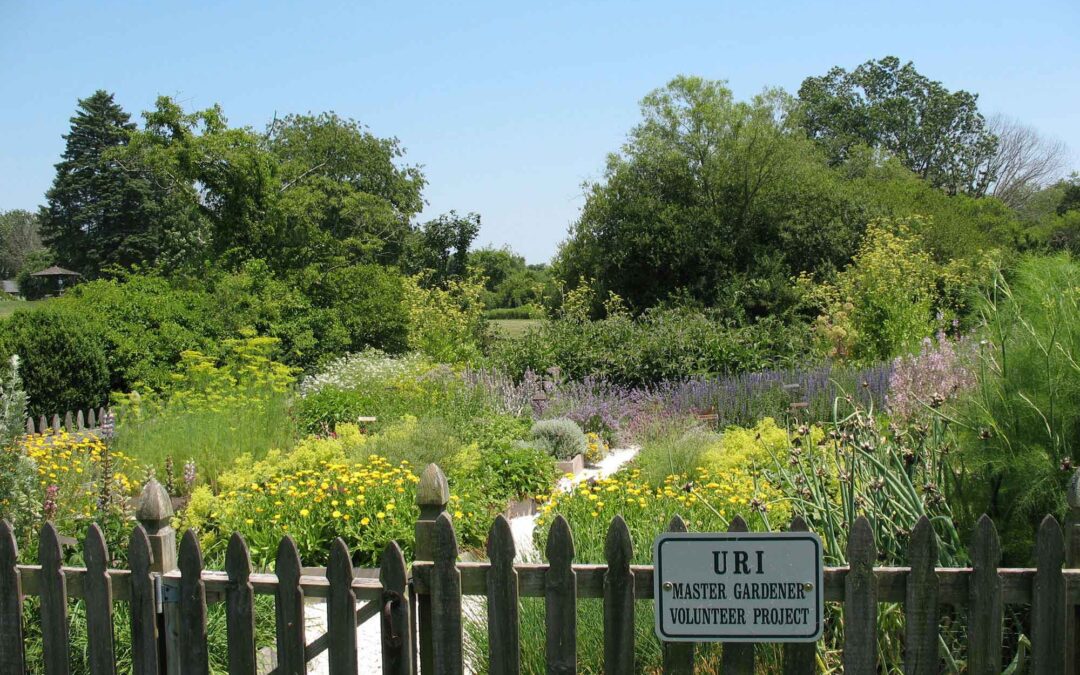
by CC:S MY | May 1, 2018 | NRF News
Prescott Farm’s landscape is typical of rural Aquidneck Island in the 18th and 19th centuries, with gentle sloping land, good soil, fields lined with stonewalls, and areas of scrub trees and brush. The farm is fortunate to have water on the property in the form of a brook and two small ponds, manifestly desirable in a “country seat” for a wealthy colonial gentleman.
The URI Master Gardeners, who manage the gardens at Prescott Farm, are offering:
Whether you are growing vegetables, flowers or simply caring for your lawn, proper soil is the key to good results. The trained Master Gardeners will evaluate the texture and pH of your soil sample, provide advice on improving your growing conditions, and tell you how to get more detailed testing. In addition, the Master Gardeners will offer advice on any gardening, lawn care, tree care or other questions you may have. (Weather dependent.) FREE soil analysis and gardening information at Prescott Farm on select Sundays, April through October, from 10:00 am to 12:00 pm.
How to obtain a soil sample:
- Using a clean trowel, take and combine several smaller samples in each separate area of your property that you want to test. Take a sample at a depth of 3-4″ for lawn, 6-8″ for vegetables and flowers and 12 -18″ for fruit trees. Do not sample recently fertilized, limed or very wet soil. You can take the sample from different parts of the lawn or garden.
- Take approximately one cup of soil and spread it on a piece of paper to dry overnight.
- Transfer the sample to a small zip-lock bag. Write on the bag your name and the type of plants you plan to grow and bring it with you.
Prescott Farm is located at 2009 West Main Road, Middletown, RI.






